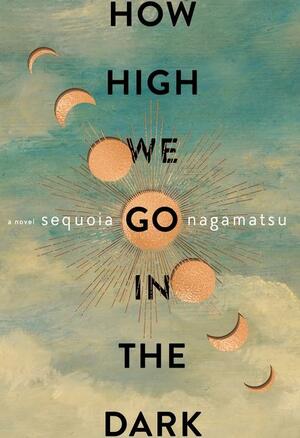Mapping the Interior by Stephen Graham Jones
Status: Completed
Very weird, very short, very disturbing. It had some strong magical realism elements, but since the narrator was the only person to experience anything out of the ordinary, it didn’t feel like magical realism so much as one of those books where you’re not sure if there’s actually something supernatural going on or if it’s all in the protagonist’s head. But the back cover also calls it “deeply rooted in the contemporary Native American experience,” so maybe it’s actually including a particular tribe’s understanding of or mythology around ghosts and I’m just missing the context to understand. This whole novella gives me a feeling that I’m missing something. By itself, it’s a disturbing, incredibly dark horror story that never quite answers the question of whether or not any of this actually happened. But I also get the sense that there’s deeper ideas that I just don’t have the context or the analysis skills to really grasp.
Tags: #ownvoices Native American
Trigger Warnings: Death of parent (major), bullying (major), animal death (graphic), gun violence, ableism, body horror, gore (mild)
How High We Go In the Dark by Sequoia Nagamatsu
Status: Completed
A very strange book. It’s basically a series of short stories combined into one volume, but the characters are all connected in some ways and taken together they tell the story of how life on Earth was decimated by a plague and climate change and what people did afterwards. The final connections and the overarching narrative of the story doesn’t become clear until the last chapter/story, which pulls everything together. It’s also an exercise in memory, because the whole thing fits together like an intricate puzzle and if you aren’t able to remember details you’re going to miss a lot of the connections. It’s an emotionally heavy story of an uncomfortably possible apocalypse and it made me tear up quite a few times, but also didn’t quite have the emotional impact I think it could have had because I was so busy trying to keep track of how all the different stories fit together and place them in the timeline and the overarching narrative. However, I have a notably terrible memory, so that may be less of a problem for other people. It’s unusual and clever, an interesting story told in a unique way, and worth the read if you like apocalypses with a sci-fi edge or if you just want a book unlike anything you’ve read before.
Tags: Recommended by Someone, Japanese Protagonist, Japanese-American Author, #ownvoices Japanese
Trigger Warnings: Death (graphic), child death (graphic), parent death, pandemic (major), terminal illness, suicide
Liftoff: Couch to Barbell by Casey Johnston (Unread Shelf 2024)
Status: Completed
This is a rare book that does exactly what it says on the tin – it will take you from couch (don’t know what you’re doing with weights) to barbell (can lift a barbell, have enough knowledge to do so without hurting yourself). It’s straightforward, no frills and no fancy layouts and not even any pictures (though it does come with a spreadsheet full of video links) and has the general vibe of a self-published book in the most positive way possible – it doesn’t have a publisher insisting on a certain page count or a specific narrative voice, so it skips all that and goes straight to providing practical, useful information. It also spends a lot of time on the stuff you do outside of the gym to support your weightlifting journey – mainly eating and resting. I understand the logic with that, though, because for those of us who are aware of modern exercise culture (read: all of us), the idea of resting, not working out all the time, and eating more to fuel growing muscles are the parts we’re probably going to struggle with more than the actual “go to the gym and lift heavy stuff” part. And as someone with a history of disordered eating, I found the whole idea suspiciously easy. You’re telling me I can lift some weights for around half an hour three times a week, eat half again as much as I have been eating, and still see health and strength (if not necessarily weight or size) results? Sounds fake. But also I’m five weeks into this program as of writing this review and it seems to be working so far. Turns out for me, lifting heavy stuff is infinitely more enjoyable than anything cardio-related. And though I’ve been in recovery from my eating disorder since 2017, doing this program has made it feel possible to be recovered. Take that with a grain of salt because it’s just one person’s perspective, but I’ve found it incredible.
Tags: Unread Shelf 2024
Trigger Warnings: Discussions of weight changes, discussion of calories (in a generally healthy/positive way)



